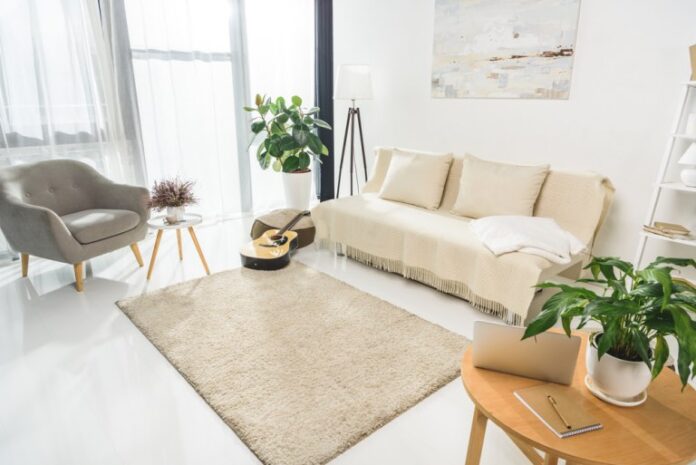The quality of the air we breathe indoors can greatly affect our overall health and well-being. With most individuals spending the majority of their time indoors, it’s crucial to find an effective way to keep the air in our living spaces clean and free from pollutants.
One practical solution is investing in an air purifier. In this guide, we’ll address all you need to know to choose the perfect air purifier to suit your specific needs while also keeping your home environment a healthy haven of refuge.
Determine the Size of Your Space
Before you can select an air purifier that fits your requirements, it’s important to factor in the size of the room or area where it will be operating. Measuring the square footage of your space can help you determine the appropriate capacity and efficiency of an air purifier needed to clean the air within the given area effectively.
You’ll first need to calculate the square footage of your room:
- Measure the length and width of the room.
- Multiply the length by the width to get the total square footage.
Note down the resulting figure and use it as a reference when comparing different air purifiers.
Selecting an Appropriate Clean Air Delivery Rate (CADR)
One essential feature to consider when choosing an air purifier is its Clean Air Delivery Rate (CADR), which rates the unit’s effectiveness at filtering various particles and pollutants such as dust, pollen, and smoke. A higher CADR typically indicates a more efficient system, and models are available with varying CADR values suited to different room sizes.
To choose an air purifier with an appropriate CADR for your space, follow this simple rule:
- Opt for a model with a CADR value of at least two-thirds the square footage of your room. This should comfortably ensure the air purifier is efficient enough to clean the air in your space.
Consideration of Specific Needs
Now that you have a better understanding of what size air purifier you need, it’s time to think about your unique requirements and preferences. Do you have allergies? Are there pets in your home? These factors can significantly impact the type of air purifier that would suit you best. Also, consider noise levels, portability, and filter replacement options when making your decision.
Allergies and Asthma
If you suffer from allergies or asthma, air purifiers designed specifically for these conditions may be more effective at providing relief. Look for units that incorporate High-Efficiency Particulate Air (HEPA) filtration systems, which are adept at capturing dirt and dander.
Additionally, some models come with customizable settings, allowing you to target specific allergens without constantly running the unit at full capacity.
Pet Owners
Pet hair and dander can cause issues for individuals with allergies, as well as contribute to poor indoor air quality in general. Therefore, if you have pets, opt for an air purifier with a pre-filter to capture larger particles such as pet hair and fur. Furthermore, HEPA filters can remove pet dander and lingering odors caused by animals, improving the ability to keep your space freshly clean.
Noise Levels and Portability
While every air purifier will generate some level of noise, it’s crucial to consider how significantly this will impact your lifestyle. Some units offer a sleep mode or whisper-quiet operation, ensuring minimal disturbance while you rest. You may also want to consider the weight and dimensions of the air purifier if it’s likely to be relocated regularly within or between different locations.
Filter Replacement Options
The filters in an air purifier must be replaced periodically to maintain optimum performance. Be sure to take note of both the availability and cost of replacement filters when selecting an air purifier. Some models feature integrated reminders for filter replacement, providing confidence in the ongoing maintenance of your unit.
Energy Efficiency and Budget Constraints
Lastly, energy efficiency should be a primary concern when choosing an air purifier. A more energy-efficient model can save on utility bills and reduce environmental impact. Look for devices with ENERGY STAR certification to ensure they meet strict criteria for energy usage set by the Environmental Protection Agency (EPA).
Additionally, bear in mind your budget constraints when making a purchase: Strike a balance between affordability and quality features that meet your specific needs.
Conclusion
Selecting the right air purifier for your space involves measuring your room size, determining an appropriate CADR value, assessing your unique requirements, and considering energy efficiency. With these factors in mind, you’ll be well-equipped to make an informed decision and truly reap the benefits of improved indoor air quality that everyone can take pleasure in.
